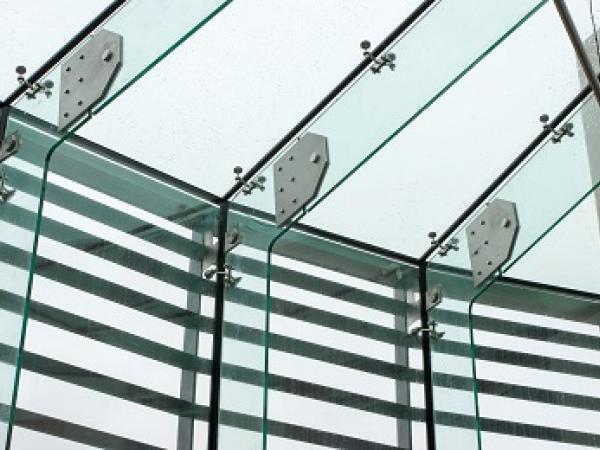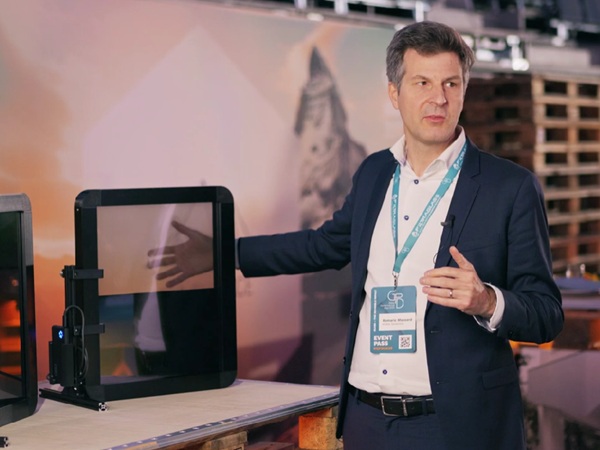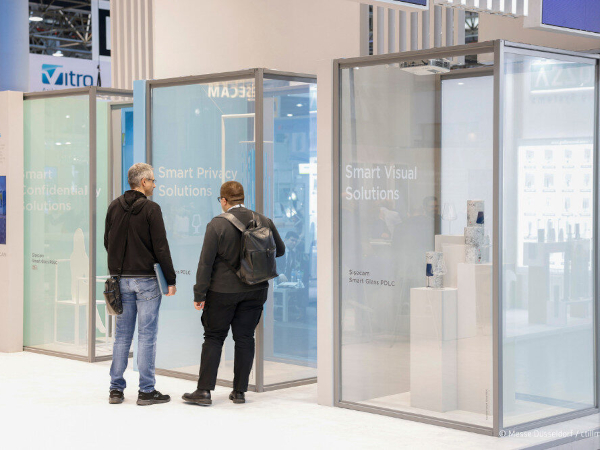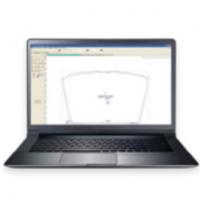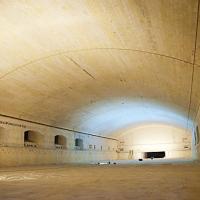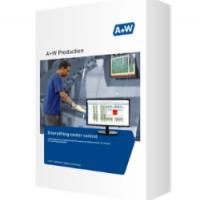Architects of prestigious buildings – whether in culture, politics or business – have always used glass as a design element. Yet today’s functional buildings tend to have shapes that go much further than pure expediency, and glass is therefore used more and more frequently as a structural support element.
Historic, 19th-century examples include the greenhouses at Kew Gardens in London and at Laeken in Brussels: glass engineering of the highest standard and indeed over 130 years old. At the time flat glass was still rather a costly building material. The open greenhouses gave people an idea of state-of-the-art 19th-century engineering and of the owners’ wealth.
But the examples also show that glass helps to integrate a building skilfully into the surrounding landscape without disturbing its visual impact. Glass enlarges premises and provides a connection between the inside and the outside.
Greenhouses at the Royal Palace in Laeken, Brussels, Belgium (copyright: © Royal Palace – Christian Lambiotte)
Glass has symbolic power
Inspired by this type of glass architecture, the renowned architect Frank Gehry recently designed an exhibition building for the Fondation Louis Vuitton in Paris which was opened in 2014 and shows how contemporary glass engineering can be realised at the highest level. Set within plenty of green space on the edge of the Bois de Boulogne, the twelve-part roof structure reminds us of two overlapping sails. Being a self-confessed sailing enthusiast, Gehry wanted to create the impression of a sailing boat moving ahead at full speed.
The total area occupied by glass – 13,300 square metres in all – consists of 3,600 panes, none of which are identical. The angle of the bend is different for each pane, ranging from flat to a 3-metre radius.
Palm House at Kew Gardens, South-West London, UK (copyright: © RBG Kew – Royal Botanic Gardens Kew
Moreover, the building material had to meet all the relevant safety engineering requirements, stipulated under French law. Gehry therefore decided to use laminated safety glass (LSG) in combination with a strong, highly rigid interlayer, 1.52 mm thick and made of SentryGlas® ionoplast from Kuraray Europe GmbH. The actual glass is prestressed, with panes that are six and eight millimetres in thickness. To meet the high standards of structural engineering, the LSG had to be freely shaped, using modified bending furnaces.
The 6-mm inner pane was given a reflective coat, with white ceramic screenprinting and 50% opacity – an important feature to protect the valuable exhibits from direct sunlight. Moreover, it creates a pleasant, non-glare lighting effect.
The steel section system VISS SG from Jansen AG was inserted into the glass façade, allowing large openings within the façade. VISS SG is Jansen’s system for structural glazing façades (Copyright: Jansen AG)
To ensure an undisturbed overall visual impact of the individual sails, the design engineers and the architect opted for an adhesive bond between the LSG and the frame and also as a filler for the wide expansion joints. They decided to use sealants from Dow Corning.
Using appropriate materials, the entire structure has been designed for durability and safety. After all, it will remain the property of the Fondation Louis Vuitton for another 48 years before it is handed over to the public sector.
Glass façade made from spot-fitted sun protection glass with screenprinting for the stair tower. Or: The glass façade for the stair tower consists of spot-fitted sun protection insulation glass with screenprinting and mounts, each made from hot-stored toughened safety glass and from tempered and partially toughened glass for the roof. The spot-fitted insulation glasses, up to about 2.0 m x 4.0 m in size, are joined to a supporting steel structure via so-called spiders. Manufacturer: Hunsrücker Glasveredelung Wagener GmbH & Co. KG für Umbau und Sanierung Schloss Grimma, 04668 Grimma, Germany (copyright: ISOLAR® Group)
Glass with a load-bearing function
As the building in Paris shows, glass has its own load-bearing qualities and can therefore be used for precisely such purposes in structural engineering. This means that flat glass is suitable as a primary, not just secondary material. There are no irritating braces and no metallic reflections – just pure glass.
Furthermore, the load-bearing effect of the glass can be reinforced – another feature that is illustrated by the Louis Vuitton Foundation. This makes it possible to enhance not only the normal load-bearing capacity of the glass, but also its residual load-bearing capacity after potential breakage. If an appropriate and structurally efficient film is used, manufacturers can now produce a laminated glass that will carry the weight of a person after breakage, despite a nearly 30% reduction in thickness.
1544; Apple High Profile Store, Fifth Avenue Cube, 2006, USA, New York. When Bohlin Cywinski Jackson completed his first project in 2006, he set a striking signal which received worldwide attention. Even at the time Sedak’s innovative glass products on this masterpiece resulted in redefining the boundaries of technical feasibility in structural glass engineering. (Copyright: ©sedak GmbH & Co. KG)
In the future the load-bearing properties – the shear modulus – of such a film will assume an even more important role in the structural analysis of components for construction purposes. The coefficient provides information about the linear elasticity, created for instance by a shearing force.
Structural glass engineering stands or falls by the mounting option that is applied to the material on the support structure. Prof. Ulrich Knaack from the Technical University of Darmstadt and Delft University of Technology sums it up as follows: “Façade engineering is high-end technology at a building site.”
The most common type of glazing involves linear mounting. The main components of this option are horizontal and vertical exterior mullion-and-transom designs with interior pressure bars and elastic supports, e.g. made from silicon. The result is a sleek silhouette.
About five years later Sedak moved the boundaries again – this time with an innovative glass cube that involved the use of some latest developments and innovations in glass engineering. The design, which was realised in 2011, displays a hitherto unimaginable level of transparency, and the cube functions as a perfectly minimalist glass envelope. Each façade consists of only three LSG glasses (instead of the previous 18) and is extremely large – 3.3 m x 10.3 m. This is the first time that titanium fittings – which bond the panes to two continuous glass fins in the area of the two vertical joints – have actually been laminated into the glasses. As a result, they are almost imperceptible. (Copyright: ©sedak GmbH & Co. KG)
The spot-fitted bracket has stainless-steel retaining bolts which hold the glass pane in place and eliminate the need for sections. To do so, the glass needs to be drilled through, creating some highly concentrated tension at the drillhole. This is why conventional spot fittings only permit the use of prestressed glass (i.e. tempered safety glass or partially toughened glass).
Apart from the option of drilling through the panes, a rear-ventilated façade also allows the use of clamping mounts on edges and joints, holding the pane in place.
A so-called undercut anchor fulfils the same functions as a drilled-through spot-fitted bolt. Yet the drill hole is conical in shape, and not a through hole. On the outside of the glass façade this results in a completely smooth surface, which is easier to clean.
An example of structural glass engineering on a staircase, showing Sedak’s corporate head office in Gersthofen (copyright: ©sedak GmbH & Co. KG)
Structural and composite glazing
For the last 15 years glass panes have been firmly bonded into the façade, and two methods have become established for this purpose. Both involve bonding the pane to the support structure, using a durable, weather-resistant silicone adhesive. But while structural glazing (SG) can have a support structure or section made from materials such as aluminium, plastic or wood, composite glazing only requires GRP.
Likewise, there have been quite a few developments in bonded panes. Whereas individual glasses were once joined pane by pane to a supporting structure – whether spot-fitted, in a mullion-and-transom design or bonded – it is now the pane itself that has the relevant load-bearing properties. This has been illustrated particularly graphically by the German company Sedak on the Apple Cube on Fifth Avenue, New York. The building is a pure glass cube, yet it has all the necessary load-bearing functions – without any frames or irritating mullions or transoms.
Each side of the cube has no more than three slabs of laminated safety glass, in five layers, with shear-resistant ionoplast interlayers, 3.3 m x 10.3 m in size. It was the first time that the connecting titanium fittings were laminated into the LSG. Combined with the analogue roof structure, which is rigid and self-supporting, this enabled the creation of a building envelope which is made entirely of glass and therefore both transparent and minimalist. Sedak, the glass-finishing company, also applied some bending to the panes during the lamination process, to ensure that rainwater can run off more easily.
Kilden Theatre and Concert Hall, Kristiansand, Norway:
The panoramic façade, bent at the edges, penetrates the curved roof design. It was realised with Jansen VISS Ixtra high-precision, laser-welded steel sections. (Image copyrights: Jansen AG)
This cultural venue, which can be seen a long way from the sea, is open towards the seafront, thanks to a floor-to-ceiling glass front. (Image copyrights: Jansen AG)
The discreet yet smart design consists of segments which are each about 3 m wide and 2 m high. (Image copyrights: Jansen AG)
The glass façade penetrates the wooden design in a straight line, though with slight rounding towards the concluding edges. (Image copyrights: Jansen AG)
Positive side-effects of structural glass engineering
During the last few years developments in façade construction have led to and changed a number of further products which are not directly related to façades. For example, balustrades with load-bearing properties are now becoming increasingly popular. They can be found on observation decks, in rooftop restaurants and in smart penthouse apartments – places where it is important have an unobstructed view, while also offering safety.
As well as expanding the architect’s freedom of design, glass has numerous further benefits in construction – advantages which are not just visual. Pre-shaped, sectioned glass elements can be delivered to a building site in a customised form and can be used just as they are. Approved and prefabricated glass construction elements for glossy glass railings can be clicked into the supporting structure on site where they can be variably adjusted, so that they are ready for use straightaway. This saves valuable time in the planning of large construction projects – and very often also money.
The architects and engineers do, however, need exact specifications and thorough calculations, so that they can meet the strict DIN and EN requirements that are stipulated by law to ensure safety and structural stability. They also need glass manufacturers and finishers with state-of-the-art machinery – a segment where Germany’s glass industry is in a good position. SMEs are making the most of these opportunities and are increasingly concentrating on sophisticated niche products.
spot-fitted façade of Devere Hall, University College Cork, Ireland (copyright: Rainer Hardtke)
“Structural glazing light” for private customers
Although today’s bonded glass panes in private housing do not qualify as genuine structural glass engineering products, they are nevertheless a technically inspired side effect of this discipline. There is now a growing demand for slim sections in bonded windows, and indeed not just for conservatories and patio canopies.
What makes them attractive is that they require fewer load-bearing elements and visual irritations. After all, builders of private houses, too, want to benefit from this forward-looking engineering in their construction projects. Even in existing properties window areas are now being enlarged, panes are inserted down to floor level, and box frames in timber-framed houses are filled with glass.
Structural glass on the façade of a printshop in Ireland (copyright: Rainer Hardtke)
“There’s a clear trend towards higher quality in refurbishment and new builds than there was a few years ago,” said Martin Langen from B+L Marktdaten at a conference held two years ago by GKPF, the German Quality Assurance Association for Plastic Window Systems1). Thanks to outstanding thermal properties and tight sections, it is possible to create a large amount of space for windows within the brickwork.
The market has responded with some remarkable products. Large windows and sliding doors can be divided with the help of a classic mullion-and-transom design at a visible frame width of 50 mm. An even leaner option is offered by GIP Glazing, with a width of only 15 mm, while still reaching a heat coefficient of 0.90 W/(m2K).
Interior of a spot-fitted façade with load-bearing glass support (copyright: Rainer Hardtke)
Opportunity for the window construction industry
Bonded window systems are increasingly penetrating the market, with a share that has grown from 2.9% in 2010 to over 11%.today. A niche has opened for this industry, enabling them to gain a competitive edge over cheap suppliers from the East. Some window manufacturers have converted their entire product ranges to this new product, each creating a unique selling point for themselves. After all, bonded windows have quite a few amazing benefits.
Example of a structural glass façade with visually “penetrating” concrete elements (copyright: Rainer Hardtke) The following photographs refer to the section “Structural glazing light” for private customers
Particularly in view of the current debate on quadruple insulation glass, window makers and fitters are pleased that bonded windows with suitable panes in different thicknesses are 20% lighter than conventionally wedged solutions.
Office building near Dublin, Ireland, fitted entirely with the GlasWin system (copyright: profine Group)
Another convincing feature is that they need far less maintenance. Bonded insulation glass scores more highly in rigidity, load transfer and durability. Also, delivery times are shorter, Ug values have been improved through better isothermic patterns, and absolutely no wind can enter through the casements.
The Vanguardia office complex in South America (probably Chile) with the GlasWin system (copyright: profine Group)
In all, these are important arguments for the end customer, as bonded windows require different production methods, so that, quite often, they are no cheaper.
The former Rheinberger shoe factory in Pirmasens, a listed building, has been fitted with GlasWin system windows (copyright: profine Group)
glasstec 2016 in Düsseldorf in September will showcase today’s global state of the art in structural glass engineering, delivering important stimuli for the global glass industry. The two highlights will be a special show entitled glass technology live, with presentations at an accompanying symposium, and a new conference, Function Meets Glass, on 19 and 20 September 2016.
Residential building in Hamburg, fitted entirely with structural glazing, using the GlasWin system (Copyright: profine Group)

